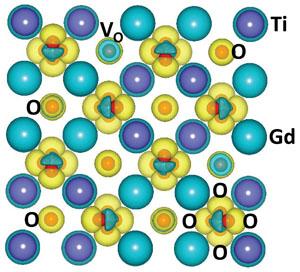
Normally, radiation-induced amorphization is a high-energy process caused by local melting due to thermal spikes created by atomic collision cascades or extreme ionization; however, this work demonstrates that localized electronic excitations make the transformation to an amorphous state easier. In these pyrochlore structures, excitation of the oxygen 2p electrons creates an instability of the structure that decreases the temperature for the crystalline-to-amorphous transformation as the concentration of electronic excitations increases: from the melt temperature for no electronic excitations to room temperature for electronic excitation concentrations of 1.4% for Gd2Ti2O7 and Sm2Ti2O7 and 1.6% for Y2Ti2O7.
H. Y. Xiao, W. J. Weber, Y. Zhang, X. T. Zu, and S. Li, “Electronic excitation induced amorphization in titanate pyrochlores: an ab initio molecular dynamics study,” Scientific Reports 5, 8265 (2015). DOI: 10.1038/srep08265
For more information

